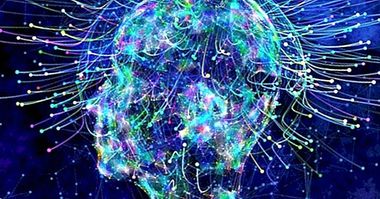Intrinsic motivation: what is it and how to promote it?
When talking about motivation and, in particular, intrinsic motivation, the first thing we consider is: What drives people to act the way they do? What makes a person persist in the achievement of a goal (such as approving oppositions) in spite of the pain and effort that this entails? Why are there people capable of persisting in a task and instead others postponing or starting it? others at the same time without finishing any of them?
The study of intrinsic motivation is a topic of Basic Psychology . We know that the human being acts for reasons: either to get what he needs (food, money, prestige ...), or to avoid what he fears (obstacles, illnesses, punishments ...). In this article, we will try to discover what it is and why it is so important.
Brief historical review of intrinsic motivation
Motivation has been present in all eras. Already Plato spoke of anger, courage, instincts, Aristotle mentioned goals, Epicurus focused on the pursuit of pleasure and flight from pain.
Since the foundation of scientific psychology we will remember McDougall (1908) who used instincts as an explanation of behavior, Freud (1910) with unconscious motivation. Although the behaviorism of Watson and Skinner did not address this issue since they understood learning as the sole engine of action, until neobehaviorism through Clark Hull (1943) saw that learning was not enough to execute a behavior.
It is not until the theories of personal causation of the 70s (De Charms) and the theory of self-determination, back in the 80s (Deci and Ryan), that we begin to talk about intrinsic motivation.
What is intrinsic motivation?
The intrinsic motivation has its origin within the individual, and is directed by the needs of exploration, experimentation, curiosity and manipulation, which are considered motivating behaviors in themselves.
Intrinsic motivation, according to Deci, is an underlying need in the individual for social competence and self-determination . That is, those behaviors that take place in the absence of any apparent external contingency are considered intrinsically motivated. The realization of the activity is an end in itself and its realization allows the subject to feel autonomous and competent, fundamental for the proper development of healthy self-esteem
We can all put some example of intrinsic motivation in our lives: participate in volunteering, altruistic acts, do our work well, search for more knowledge, personal improvement in the realization of a sport, hobbies ...
In short, the reasons that lead to activate a behavioral pattern are inherent in the person. No external stimuli are needed as in extrinsic motivation, but they are not mutually exclusive. That is, you can carry out an activity that is intrinsically motivated (help others) but also get an external reward (money).
Unlike what is achieved with extrinsic motivation (external rewards), with intrinsic motivation we achieve experiences, feelings of efficiency and mastery of the task . Three related feelings usually appear:
- Self-determination and autonomy : be the directors of our own life.
- The competition : control what we do, experience the mastery of our abilities.
- Relations : interact, be connected and worry about others.
- Satisfaction for doing something personal and familiar
At first it was thought that both types of motivation were independent, but Deci and Lepper showed that an activity that had a high intrinsic interest could be diminished if rewards were introduced, to this fact they called it an effect of overjustification. Interestingly, the subject lost interest. The negative effect of the reward is known as the hidden price of the reward.
Which is better, intrinsic or extrinsic motivation?
We must clarify that neither the extrinsic motivation nor the intrinsic motivation are "bad" per se, but it will depend on what is present in the life of each person, the context of the same and their psychological and personal situation.
Extrinsic motivation is driven from the outside, either by the strength of the prize or by the force of possible punishment (eg, that student who starts studying the night before for fear of suspending and having to pay a fee). higher academic credits).
In these cases, the subject can see himself doing something that he does not like simply for the reward (think of all those people who do work that does not intrinsically motivate them for the economic reward). This type of motivation is available in the whole society, even the educational system is extrinsically motivated . The great handicap of this motivation is that it can not satisfy the need for self-determination.
Therefore, it is necessary to develop and change from the extrinsic to the intrinsic, which is possible by making the subject reach levels of autonomy in the task he performs and offering a context or environment that facilitates interpersonal relationships.
A very clear example of this last reflection is to begin to educate children by promoting their autonomy and self-realization by the process itself (the intrinsic) instead of focusing only on the extrinsic rewards / punishments to carry out the tasks. This is not so easy: when carrying out activities and putting them into operation, extrinsic motivation is often necessary to start routines, especially in children . However, once they have started and have been incorporated into the subject's routine, it would be that they were maintained by intrinsic motivation.
Thanks to Psychology, it is known that when the motivation comes from within, you are able to persevere in the task for a longer time, that is why it is so important to encourage it in processes such as studies, competitions or high performance athletes.
How is this type of motivation promoted?
We will be basing ourselves fundamentally on what Deci and Ryan's theory of self-determination proposes. One of the fundamental objectives to move from the extrinsic to the intrinsic is to focus on satisfying our needs for autonomy and self-determination.
In the workplace, thinking in terms of "I have to", "should do ..." leads us to feel overwhelmed, pressured, and feel that we are full of "mandatory" tasks imposed. We feel bound and, even though we are paid for these activities (which promotes extrinsic motivation), it may not be enough to feel good.
It is positive to try to put aside the backpack of the "I have and should" and start thinking about the "I want". When we think about what we want to do, we are satisfying our needs for autonomy and self-determination. Today in my work: Do I want to feel that I have contributed something positive? Do I want to feel that I have helped another person? Do I want to feel satisfied with the effort I have made? Do I want to learn new things?
Then we can ask ourselves: "to get what I want to do, what can I do to get it?". When we consider what we can do, we are encouraging the need to feel competent and in control of what we do, and we are placing ourselves in the driver's seat of our lives. It is in our power to choose to do our job well, choose to help another person, choose to look for more information to learn a little more ...
Obviously, not in all situations we will be able to apply this change of perspective, but it may be useful to reflect on why we do things and how we can change those that do not make us feel good and are modifiable.



















